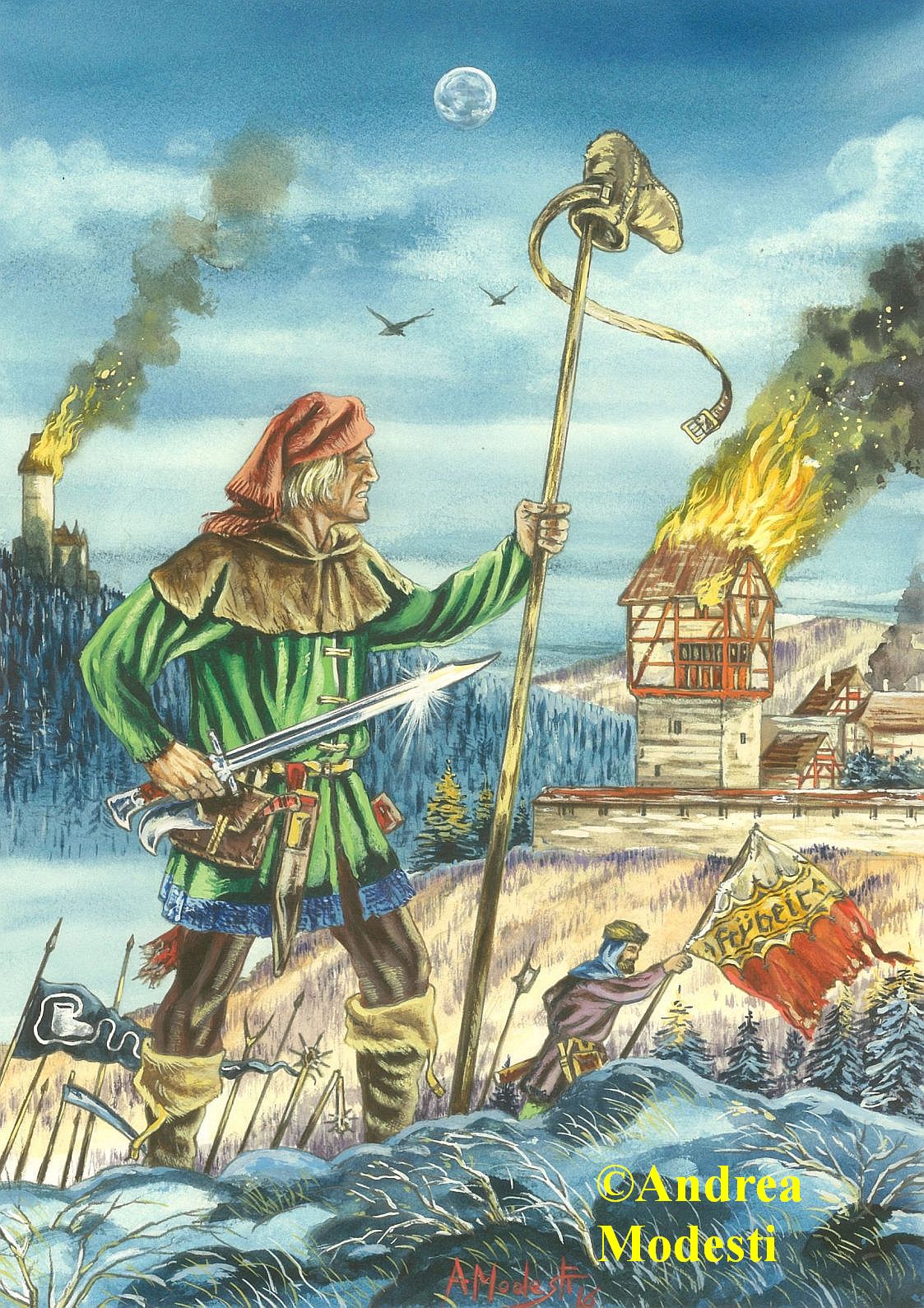These aren't complete yet but give you an idea of what's coming:

These aren't complete yet but give you an idea of what's coming:

@Hudson Adams I like these actually, I didn't think of citizen levies as a possible interpretation of the Civilians theme. A very important (if not glamorous) component of not only Tudor armies for this Renaissance time period, but also these wouldn't be too difficult to modify for use in earlier Medieval and even Dark Ages armies as peasant garb remained virtually unchanged throughout these time periods.
I take it these are completely brand new, not a modification to an existing kit?
@Caratacus all new sculpted by Rob Macfarlane who also did Goths, Romans, Einherjar, Irish, Aztecs, Conquistadors, SAS, German Sentries and I think I'm missing some!
And yes "Civilians" doesn't preclude them being armed! (we're wargamers after all!)
Very interesting! Are there any references for the costume, that make the figures notably 'renissance' rather than 'genericly medieval'?
seems good for light infantry figures or empire hunters
Apparently that "billhook" is called a bush axe, and is used to clear brush and such much the same way a machete is.
...I assume that's why a peasant is carrying one?
Wow, learned some stuff looking that up just now. They have all sorts of names, like sling blade, kaiser blade, brush hook, briar axe, and ditch bank blade.
@Jay H. I have several for the yard, and yes I assume it's a "tool" rather than a weapon
@Xander Warren I have one, which is the only reason I know what they are lol
I have no idea why these are marketed as "Renaissance" though, as you had inquired. Seems pretty "generic medieval" to me, too.
@Jay H. Fair!
According to a commentator on facebook, the long tunics are 13th-15th C... So maybe tail end of early renissance?
Looking at the German Peasants war/War of the snails (1520s) - a few seem to be in the 'medieval' tunics, but more seem to be in shorter tunics with hose







A few slightly later 1500's renissance peasents:

Tunics and hose are solidly medieval. Hemline is more kneelength for men; hose are individual and attached by ties to the underwear for males and with knee garters for ladies. Not much changes between the 12th and 14th century in this regard. By the 15thC hose tend to be one piece tights plus codpiece and VERY short hemlines become fashionable - however those kinds of fashion often don't carry over to the lower classes. And hose aren't always worn in summer anyway.
Shorter hemlines are more practical for workers. You often see illuminations of field workers stripped down to their braes, and one who have hiked their skirts up are common. Ankle length bliants etc were always a court fashion. You can design a peasant kit that works for a lot of eras.
Hoods are persistant fashions, too. Although long lirapipes are mostly a court fashion.
These seem to be pretty good for roughly 13th-15th C. Some of the hats are later fashions, but you'd just choose other heads to print. The cloth coif is in use even earlier and later.
Looks quite similar to the Fireforge Folk Rabble kit, which has a similar utility (and which I do reccommend. They could do far worse than to copy that kit).
The weapons in this set are wonderful.
I immediately saw potential for my Turnip 28 forces. Those rakes will make great Loper feet (my favorite force), and there's lots of Red Ribbon potential on the hoes, switch blades, and rakes. The tunic tops has potential too
Lower classes were more concerned with praticity than fashion, this was the primary reason for so few differences btw 13th till early 16 century. And some weapons employed by infantry (very well!) against heavy cavalry were derived by peasants' tools, such as the flail or the billhook, the former employed by the Hussite and the later evolving in the Bill, also the halbeard was probabilly an evolution of it. Naturally the pricipal reason of the various revolts being crushed was the lack of organization they had, perhaps with the exception of the Hussites, that had the support of many lower nobles and merchants, at least at the start.
@Xander Warren I expect the main reason they are labelled as "Renaissance" is that WGA are not going to open a 12th range at this point.